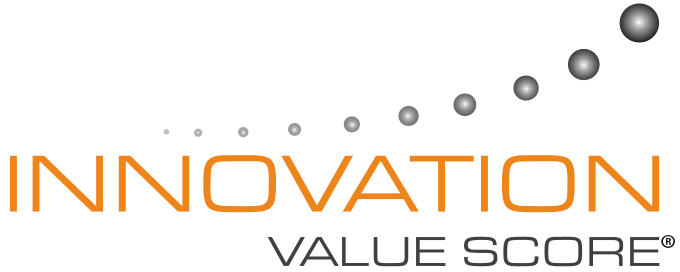Introduction:
Innovation is the lifeblood of any successful organization, and measuring its success is crucial for sustained growth and competitiveness. However, Innovation Managers, Entrepreneurs, Corporate Executives, and Investors often face challenges in quantifying and evaluating the impact of innovation. This blog post aims to simplify the process by focusing on key metrics that provide valuable insights into innovation success.
Understanding Innovation Metrics:
Before delving into specific metrics, let's first define what innovation metrics are. These are measurable indicators used to assess the performance and effectiveness of innovation initiatives. They can be both quantitative, involving numerical data, and qualitative, capturing valuable insights and feedback. The key to making these metrics valuable is to align them with organizational goals and objectives. Even students practice measuring these indicators in order to demonstrate their skills as future economists or analysts. It is possible to better understand the measurement of the effectiveness of the implementation of individual innovative projects thanks to the help of the economics essay writer from https://mid-terms.com/informative-economics-essay-writing/.
Key Metrics for Measuring Innovation Success:
Return on Innovation Investment (ROI2):
Return on Innovation Investment (ROI2) is a critical metric for evaluating the financial impact of innovation projects. It calculates the returns generated from investing in innovative initiatives. To calculate ROI2, divide the net profit generated by the innovation by the total investment in the project. Tracking ROI2 is vital for decision-making, as it helps prioritize and allocate resources effectively. For instance, Company X increased its ROI2 by 25% after implementing an innovative customer service process that reduced costs and improved customer satisfaction.
Innovation Adoption Rate:
Measuring the rate at which customers or internal stakeholders adopt innovative products or processes is essential. A high adoption rate indicates a successful innovation with a significant impact on market penetration and competitive advantage. To boost adoption, focus on seamless integration, user-friendly interfaces, and effective communication about the benefits. Case studies show that Company Y increased its innovation adoption rate by 35% by implementing regular customer feedback loops and promptly addressing user concerns.
Time to Market:
Time to Market measures the duration from the conception of an idea to the launch of an innovative product or service. Shortening this timeline is crucial, as it enhances a company's ability to respond to market demands swiftly. Agile development methodologies and cross-functional collaboration can help reduce Time to Market. For example, Company Z significantly reduced its Time to Market by 50% by adopting agile methodologies and encouraging close collaboration between R&D and marketing teams.
Customer Satisfaction and Feedback:
Customer-centric innovation is paramount for long-term success. Collecting and analyzing customer feedback provides valuable insights for continuous improvement. Customer satisfaction surveys, user feedback, and online reviews are essential sources of data. Implementing improvements based on this feedback strengthens customer loyalty and drives repeat business. A study revealed that incorporating customer feedback into their innovation process resulted in a 15% increase in customer satisfaction for Company A.
Innovation-driven Growth and Revenue:
Innovation plays a crucial role in driving business growth and revenue. Measuring the revenue generated from innovative products or services provides a clear understanding of their impact on the company's financial performance. Balancing short-term revenue gains with long-term innovation strategies ensures sustained growth and market relevance. Company B saw a 20% increase in revenue after launching innovative products that catered to emerging market trends.
Assessing the Impact of Innovation on Efficiency and Cost Savings:
Innovation should not only focus on generating revenue but also on optimizing operations and cutting costs. Measuring cost reductions through innovative process improvements can have a significant impact on the bottom line. Identifying areas where innovation can streamline operations results in increased efficiency and resource optimization. A case study of Company C revealed cost savings of 30% through the implementation of innovative supply chain management practices.
Sentiment Analysis and Employee Engagement:
Measuring sentiment analysis within the organization helps gauge the perception of innovation among employees. Positive sentiment is vital for fostering an innovation-driven culture. Employee engagement plays a crucial role in encouraging creativity and innovative thinking. Strategies such as promoting a culture of idea sharing and recognizing innovation efforts can boost enthusiasm among employees. Company D witnessed a 40% increase in employee engagement after implementing regular innovation challenges and recognizing outstanding innovative ideas.
The Role of Intellectual Property (IP) Metrics:
Innovation often results in valuable intellectual property, such as patents, trademarks, and copyrights. Measuring the value and impact of IP helps protect and leverage innovations in the market. Safeguarding innovation through IP protection is crucial to maintain a competitive advantage. Evaluating IP metrics provides potential investors and stakeholders with insights into the organization's technological capabilities. Company E secured new investments by showcasing their strong IP portfolio and its potential market value.
Integrating Metrics into the Decision-making Process:
Creating a balanced scorecard for innovation success is crucial for making informed decisions. Identifying trends and patterns from data analysis helps identify areas for improvement and capitalize on successful innovations. Data-driven decision-making ensures that resources are allocated effectively to drive innovation. Company F used data-driven insights to reallocate resources to projects with higher innovation potential, resulting in a 15% increase in the success rate of innovation initiatives.
Challenges and Pitfalls in Measuring Innovation Success:
Innovation measurement comes with its share of challenges. From defining relevant metrics to avoiding biases, it's essential to address potential pitfalls. By acknowledging limitations and adopting continuous improvement strategies, organizations can enhance their innovation measurement practices. Company G overcame challenges by conducting regular evaluation and feedback sessions to fine-tune their innovation metrics, resulting in a more accurate measurement of success.
Conclusion:
Measuring innovation success is vital for sustained growth and competitive advantage. Innovation Managers, Entrepreneurs, Corporate Executives, and Investors can benefit greatly from adopting key metrics that simplify the process. By understanding the importance of each metric and aligning them with organizational goals, businesses can make data-driven decisions, foster a culture of innovation, and drive long-term success. Emphasizing the value of innovation metrics in shaping business strategies, we encourage organizations to embrace innovation and leverage data to pave the way for a successful and innovative future.
Order Your Copy Today

